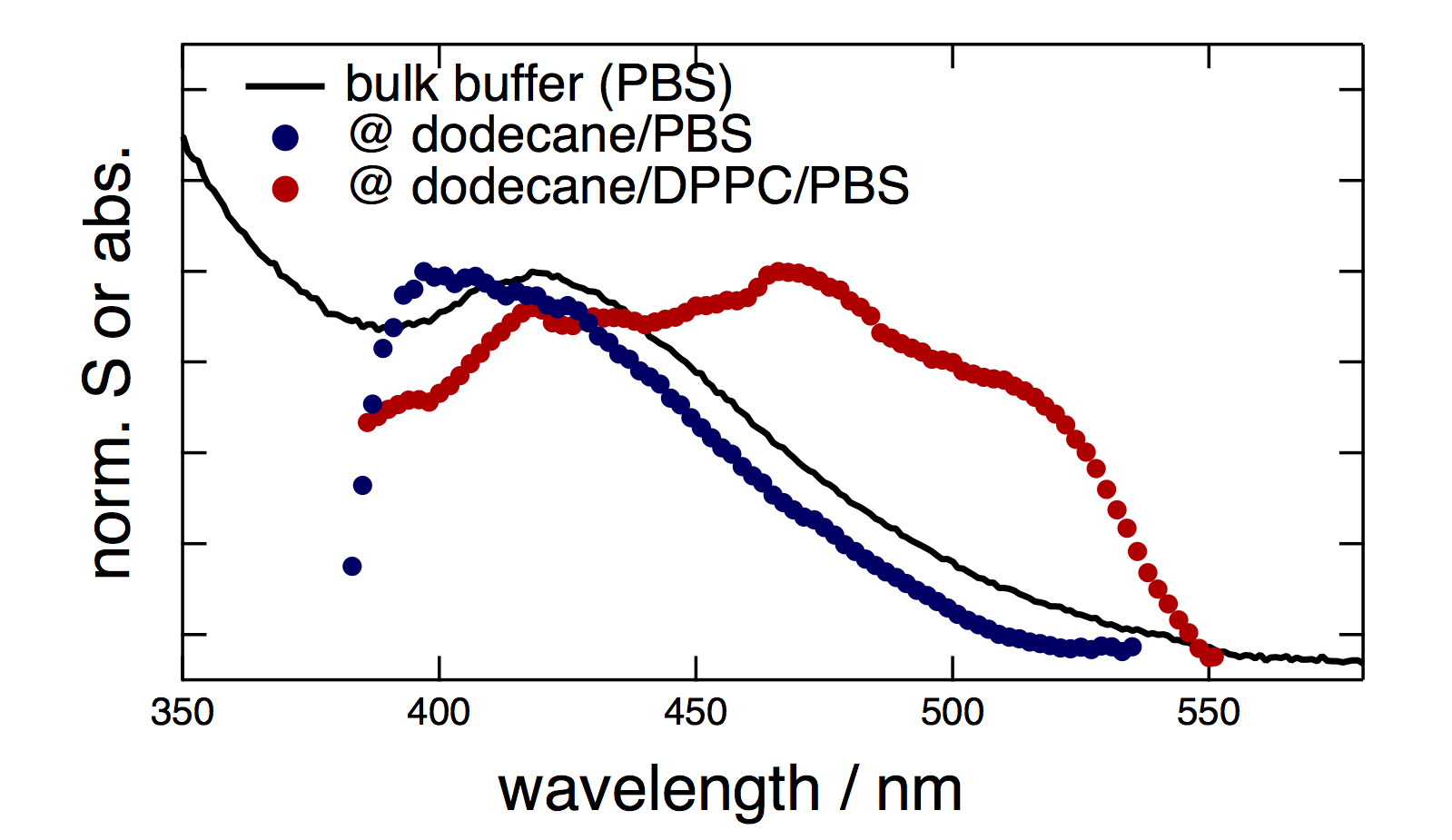A Mechanosensitive Dye as Surface Second Harmonic Generation Probe of Biomimetic Interfaces
The development of well-designed fluorescent probes has enabled the visualization of various natural processes, particularly in biology, with improved detection limits and high specificity. However, for environments such as interfaces where the response is hidden by the bulk, the fluorescence technique is not adequate and more specific methods need to be employed. Here, a stationary and ultrafast time-resolved Surface Second Harmonic Generation (SSHG) technique,1,2 which provides the required interface specificity, is applied.
A new dithienothiophene derivative, the best mechanosensitive membrane probe so far,3 is investigated at different interfaces using SSHG. For example, the figure demonstrates that the interfacial spectrum of this compound is shifted to lower energy in the presence of the ordered phospholipid monolayer, revealing the sensitivity to membrane pressure.
The present work shows the remarkable performance of this dye as a SSHG probe and, for instance, the possibility to use it in SHG microscopy, which could in the future give a deeper insight into biologically relevant questions.

[1] K. B. Eisenthal, Chemical Reviews, 1996, 96, 1343-1360.
[2] G. Licari, P.-F. Brevet, E. Vauthey, Physical Chemistry Chemical Physics, 2016, 18, 2981-2992.
[3] S. Soleimanpour, A. Colom, E. Derivery, M. Gonzalez-Gaitan, A. Roux, N. Sakai, S Matile, Chemical Communications., 2016, 52, 14450-14453.